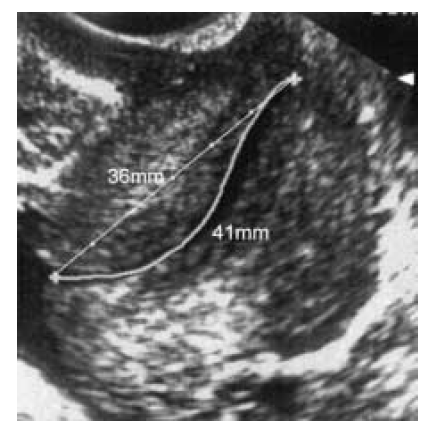Transvaginal ultrasound evaluation of the cervix measurement of cervical length (566)

Warning
| Please report any inaccuracies or issues with this guideline using our online form |
- The probe should be placed in the anterior fornix of the vagina
- The maternal bladder should be essentially empty.
- A sagittal view of the cervix should be obtained with confidence.
Remember that the longitudinal axis of the cervix often does not lie exactly within the maternal sagittal axis. - The amount of pressure exerted with the transducer should be kept to a minimum to avoid artificially lengthening the cervix.
- The widest viewing angle of the available ultrasound field should be used.
- The sonolucent endocervical mucosa should be identified as a guide to the true position of the internal os. The callipers should be placed to measure the linear distance between the triangular area of echodensity at the external os and the V-shaped notch at the internal os.

- The presence of funnelling should be noted but attempts should not be made at trying to measure it.
- The shortest cervical measurement should be recorded rather than an average of the measurements obtained.
